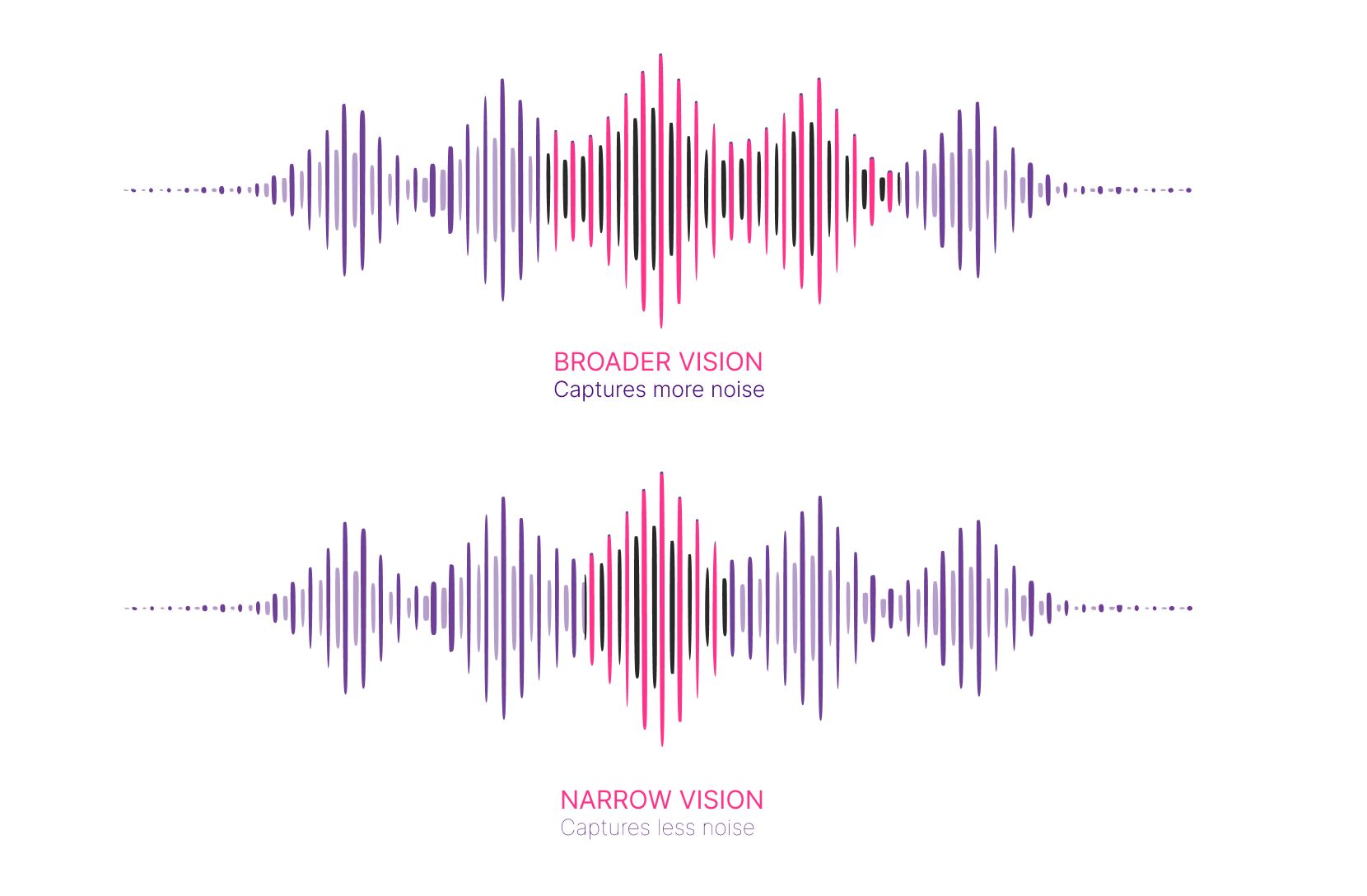Broad v/s Narrow Vision
I cannot stress the importance of having a narrow vision statement. You want to do one thing and make sure it's right. Nothing too broad, nothing too concrete.
Make a broad vision and you allow problems to pop up: noise from misinterpretation, branching and worse, conflicting organizational goals.
Here is a graphic I use to emphasize this:

The best way to understand the breadth of a vision? Consider all the possible interpretations and outcomes. If there are a handful that are addressable, you're good. If there are more edge cases and indirect interpretations than the main interpretations, it's too broad - reword it.
Consider these:
Tesla: “To accelerate the world’s transition to sustainable energy.”
Amazon: “To be Earth’s most customer-centric company, where customers can find and discover anything they might want to buy online.”
Microsoft: “Empower every person and every organization on the planet to achieve more.”
Patagonia: “Build the best product, cause no unnecessary harm, use business to inspire and implement solutions to the environmental crisis.”
Starbucks: “To establish Starbucks as the premier purveyor of the finest coffee in the world while maintaining our uncompromising principles while we grow.”
Enron: “Respect, integrity, communication, and excellence.”
Kmart: “To be the #1 retailer in the hearts and minds of consumers and employees.”
Circuit City: “To be the superior provider of electronic products, services, and solutions that enhance the entertainment, convenience, and comfort of people’s lives at home and in their workplace.”
Blockbuster: “To be the dominant global provider of entertainment products and services.”
Pan Am: “To build a great airline for the public that provides the highest standards of service and the lowest possible fares.”
The bad company vision statements are considered poor because they are either too vague, unrealistic, or lack a clear direction.
For example, Enron’s vision statement is too generic and does not provide any specific direction for the company.
Kmart’s vision statement is too focused on being number one, rather than providing value to its customers.
Circuit City’s vision statement is too long and does not clearly communicate what the company is trying to achieve.
Blockbuster’s vision statement is too focused on being the dominant provider of entertainment products and services, rather than providing value to its customers.
Finally, Pan Am’s vision statement is too focused on building a great airline, rather than providing value to its customers.
On the other hand, the good company vision statements I provided are considered strong because they are specific, realistic, and provide a clear direction for the company.
For example, Tesla’s vision statement is specific and provides a clear direction for the company to transition the world to sustainable energy.
Amazon’s vision statement is customer-centric and provides a clear direction for the company to be the best in the world at providing online retail services.
Microsoft’s vision statement is empowering and provides a clear direction for the company to help people and organizations achieve more.
Patagonia’s vision statement is specific and provides a clear direction for the company to build the best product while minimizing harm to the environment.
Finally, Starbucks’ vision statement is specific and provides a clear direction for the company to be the premier purveyor of the finest coffee in the world while maintaining its principles.